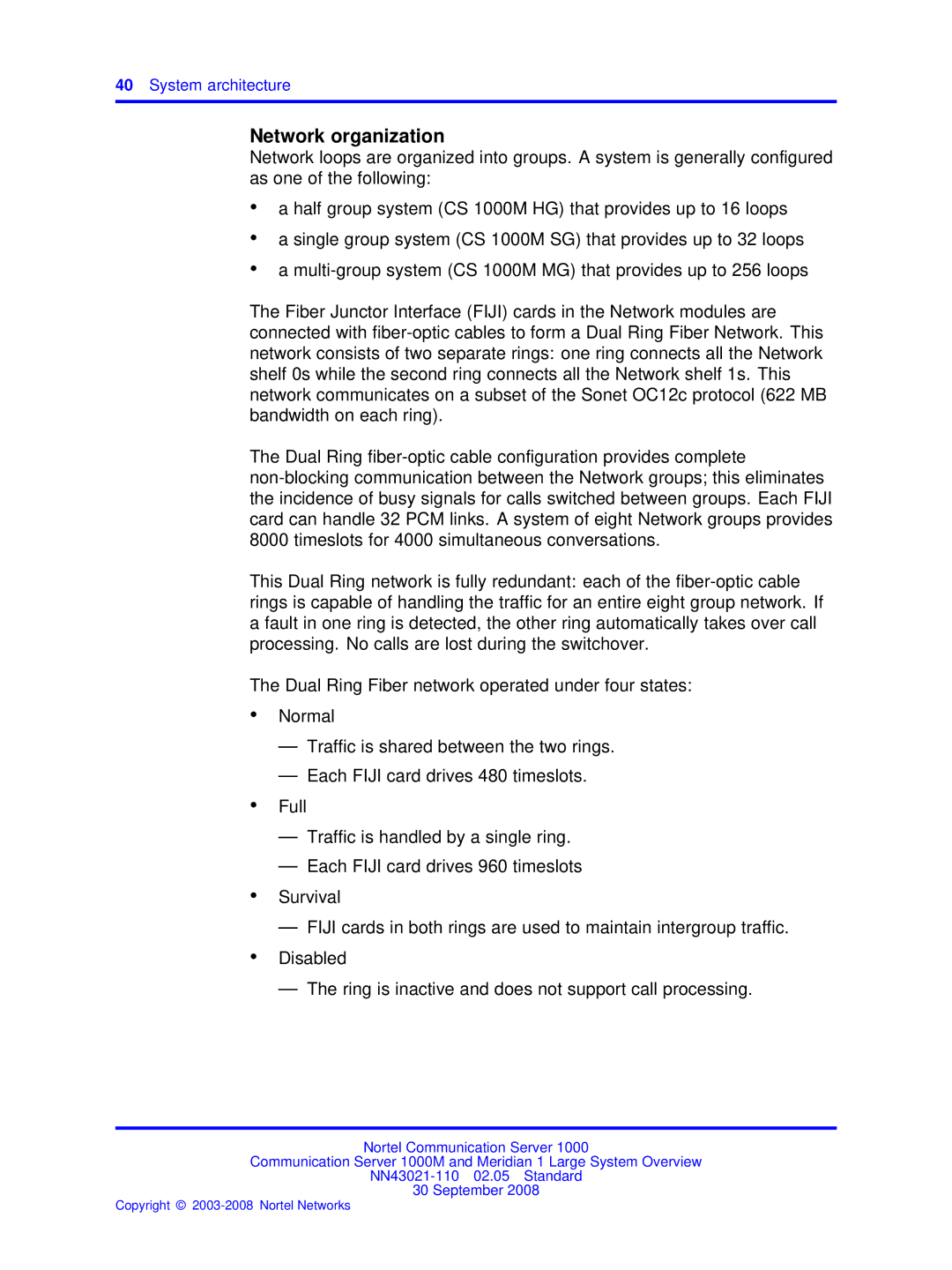
40System architecture
Network organization
Network loops are organized into groups. A system is generally configured as one of the following:
•a half group system (CS 1000M HG) that provides up to 16 loops
•a single group system (CS 1000M SG) that provides up to 32 loops
•a
The Fiber Junctor Interface (FIJI) cards in the Network modules are connected with
The Dual Ring
This Dual Ring network is fully redundant: each of the
The Dual Ring Fiber network operated under four states:
•Normal
—Traffic is shared between the two rings.
—Each FIJI card drives 480 timeslots.
•Full
—Traffic is handled by a single ring.
—Each FIJI card drives 960 timeslots
•Survival
—FIJI cards in both rings are used to maintain intergroup traffic.
•Disabled
—The ring is inactive and does not support call processing.
Nortel Communication Server 1000
Communication Server 1000M and Meridian 1 Large System Overview
30 September 2008
